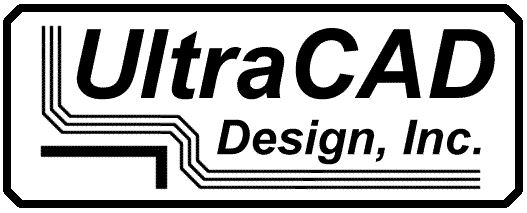
 |
UltraCAD Design, Inc |
|
Home |
|
Books & Resources |
Calculators & Tools |
Simulations |
|||||
|
xxxxxxxxxxxxxxxxxxxxxxxxxxxxxxxxxxxxxxxxxxxxxxxxxxxxxxxxxxxxxxxxxxxxxxxxxxxxxxxxxxxx |
|||||||||
| We recently received this comment from a reader. We appreciate these. |
|
|
| Brooks' and Adam's new book: Trace temperatures are important. Via temperatures are even more important. Read why designers can use significantly fewer vias than previously believed*. Read why current density should never be considered when thinking about trace and via temperatures. Learn about the dynamics of fusing when traces melt; sometimes with a whimper and sometimes with a bang! Traces do not heat uniformly along their length. They don't even heat uniformly from their center to their edge. Learn why in this very detailed and informative book. This is a must-have book in every designer's library A Table of Contents is provided below.
from Amazon
|
|
| Table of Contents | Table of Contents Preface Acknowledgement Technical Note 1: Introduction and Historical Background 1.1 Bottom Line 1.2 Historical Background 1.3 A Note About Consistency 2: Materials Used in PCB 2.1 Bottom Line 2.2 Background 2.3 Copper Used in PCBs 2.4 Dielectrics Used in PCBs 3: Resistivity and Resistance 3.1 Bottom Line 3.2 Resistivity 3.3 Resistance 3.4 Thermal Coefficient of Resistivity 3.5 Measuring Resistivity 4: Trace Heating and Cooling 4.1 Bottom Line 4.2 Overview 4.3 Trace Heating 4.4 Trace Cooling 4.5 Mathematical Model of Trace Heating and Cooling 4.6 Role of Current Density 4.7 Measuring Trace Temperature 4.8 Trace Temperature Curves 5: IPC Curves 5.1 Bottom Line 5.2 IPC-2152 5.3 Measuring the Temperature 5.4 IPC Curves 6: Thermal Simulation Model 6.1 Bottom Line 6.2 Background 6.3 Modeling Traces 6.4 Modeling Process 7: Thermal Simulations 7.1 Bottom Line 7.2 Sensitivities: Layout Parameters 7.3 Sensitivities: Material Parameters 7.4 Sensitivities: Trace Depth 7.5 Conclusions 8: Via Temperatures 8.1 Bottom Line 8.2 Background Information 8.3 Thermal Simulation 8.4 Experimental Verification 8.5 Experimental Results 8.6 Voltage Drops Across Traces and Vias 8.7 Thermal Vias 9: Current Densities in Vias 9.1 Bottom Line 9.2 Background 9.3 Single Via 9.4 Multiple Vias 9.5 Multiple Vias and Turn 9.6 Conclusions 10: Thinking Outside the Box 10.1 Bottom Line 10.2 Start Thinking “Outside the Box” 10.3 Test Board 10.4 Copper Under the Trace 10.5 Adding Additional Copper to Traces 10.6 Dealing With Connecting Links 10.7 Conclusions 11: Fusing Currents; Background 11.1 Bottom Line 11.2 Background 11.3 W. H. Preece 11.4 I. M. Onderdonk 12: Fusing Currents; Analyses 12.1 Bottom Line 12.2 Background 12.3 Fusing Time and Temperature 12.4 Assumptions and Cautions 12.5 Simulation Models 12.6 Experimental Results 12.7 The Fusing Process 12.8 Experimental Results 12.9 Summary 13: Do Traces Heat Uniformly 13.1 Bottom Line 13.2 Background 13.3 Thermal Gradients on Traces 13.4 Thermal Gradients Around Corners 14: Relevance of Current Density 14.1 Bottom Line 14.2 Background 14.3 Current Density is Not an Independent Variable 14.4 IPC Curves 14.5 Copper Type 14.6 Dielectric Type 14.7 Right-Angle Corners 14.8 Trace Form Factor 14.9 Via Current Densities 14.10 Conclusion 15: AC Currents 15.1 Bottom Line 15.2 Digital Simulation Models 15.3 Experimental Verification 15.4 Analog AC Currents 16: Industrial CT Scanning 16.1 Bottom Line 16.2 Background 16.3 The Promise 16.4 The Microsectioning Process 16.5 Industrial CT Scanning 16.6 Comparison of the Processes 16.7 Conclusion Appendices A: Measuring Thermal Conductivity B: Measuring Resistivity C: Internal and Vacuum Curves D: Detailed Sets of Equations E: Current/Temperature Curves: ¼ to 5 Oz. F: Via Current Density G: Derivation of Onderdonk’s Equation H: Fusing Current Simulations I: Non-Uniform Heating Patterns |